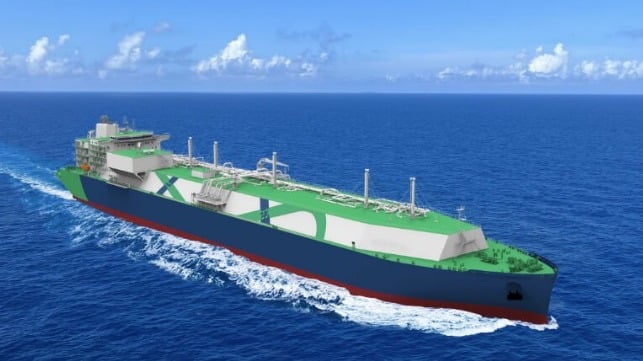Qatar Orders 18 World’s Largest LNG Carries in $6B Deal with China's CSSC

Qatar Energy and China State Shipbuilding Corporation are heralding an order for 18 of the world’s largest LNG carriers as the next phase in their relationship and support of the expansion of Qatar’s LNG operations. With the order valued at nearly $6 billion, it is being cited as possibly the largest single LNG order and one of the largest ever placed in the industry.
The new vessels will be part of an expanded QC-MAX size LNG carrier with a capacity of 271,000 cubic meters in five tanks. The current Q-Max vessels operating for Qatar have a capacity between 263,000 and 266,000 cubic meters of LNG. Qatar recently highlighted the bulk of the shipbuilding orders, which reached a total of 104 vessels, are the conventional size with a capacity of 174,000 cubic meters. Qatar Energy has also called the program the largest shipbuilding and leasing program in the history of the industry.
The order expands on the earlier reports in January 2024 that Qatar was building eight of the QC-Max class vessels in China. The order signed today calls for the first eight vessels to be delivered in 2028 and 2029, The other 10 vessels added to the order will be delivered in 2030 and 2031. All of them will be built by China’s Hudong-Zhonghua Shipyard. They also highlighted that the yard is already building 12 conventional-size LNG carriers with the first of the vessels due for delivery to Qatar in the third quarter of this year.
Each of the vessels will measure 1,128 feet (344 meters) with a design draft of just over 39 feet (12 meters). CSSC has previously highlighted that these dimensions mean the vessels will still be able to dock at 70 percent of the world’s LNG terminals.
They will use dual-fuel low-speed engines and they are highlighting a range of technological features. While they will increase the carry capacity by 57 percent. The design is optimized with a double skeg line and a lower evaporation rate, which means the vessels’ energy consumption of cargo transportation per ton per nautical mile is 9.9 percent lower than the conventional ships. They are also employing technology with a real-time sloshing monitoring system and a hull configuration stress monitoring system. CSSC says the carbon intensity index (CII) will be 23 lower than the conventional LNG carriers.
The countries highlighted that Qatar Energy is already a large supplier of LNG, crude oil, and other products to China. In 2023, Qatar shipped China 17 million tons of LNG. Sinopec. The Chinese energy company, last year acquired a small stake (less than 2 percent) in two sections of Qatar’s North Field Expansion.
Qatar Energy has also moved to expand relations with other majors including Total, Shell, Eni, and Petronet in advance of the launch of the North Field Expansion. Qatar which has been competing with the United States to be the largest exporter of LNG reports it will expand production by 85 percent by 2030 to a total of 142 million tonnes per annum (mtpa). Earlier this year Qatar Energy announced further expansion plans for the North Field reporting it holds 10 percent of the world’s LNG reserves.
